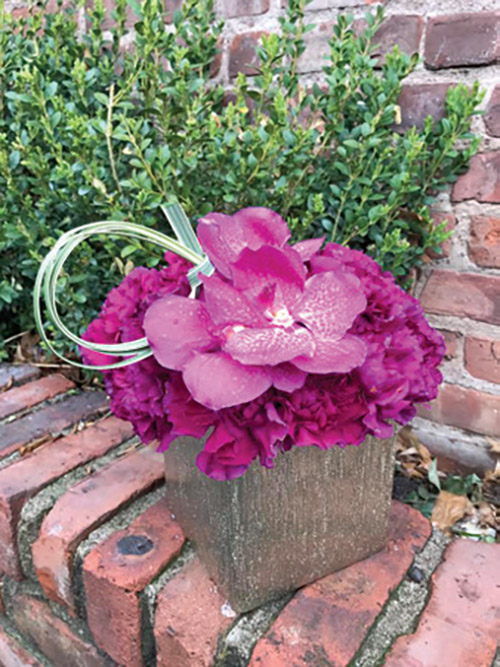

If there’s one custom Shavuot is known for (besides the proliferation of cheesecake and blintzes) it is the minhag to adorn one’s house and shul with flowers. The rabbis say that Hashem made Har Sinai bloom with greenery in honor of the giving of the Torah, and to commemorate this event many people use floral arrangements, evocative of what Har Sinai must have looked liked.
Many shuls decorate the walls, mechitzahs and bookshelves with garlands of greenery, while families add bouquets to their tables. Rather than have a hodgepodge of flowers thrown around, Raphi Heimowitz of Papaya Events, a full service floral and event design company, gave readers of The Jewish Link some insight into some of the tips professionals use in setting up aesthetically pleasing floral arrangements.
Unlike fashion colors, “flower colors are not impacted by season,” Heimowitz explained. A variety of colors is available for flower lovers year round. Of course, different color bouquets can be used for different messages. If a host is known to love a certain color—pinks and purples, for instance—or a specific color decor for a Shavuot luncheon, then Heimowitz suggested trying to find those colors for a bouquet. Additionally, some people like to find colors of spring. If this is the case, he said to opt for pinks, yellows, greens and other bright shades, while many traditionalists still prefer the purity of white flowers for the holidays.
Flower height, and really centerpiece height, is a much-debated point in dining decor. While some people prefer the drama and intensity of a tall piece, others prefer the ability for cross-table conversation that low pieces allow. Heimowitz explained that some people avoid cutting flowers down, and prefer to keep tall flowers tall and only use short flowers for low arrangements. He feels, however, that the beauty of the flower is often in the head of the flower, and if cutting it down works for the type of centerpiece needed, then feel free to do so.
If, however, one enjoys the height and elegance of the tall flowers, Heimowitz recommended using those tall arrangements on pieces not usually in the center of the meal, such as islands, servers, end tables or entry pieces.
Like flower color, the type of flower used is often determined by the interest of the purchaser and how the flowers will be used. Orchids have become a popular flower to use in fancy floral arrangements. The difficulty often arises with the shortness of the orchid stem. Heimowitz relayed that some orchids can actually stand alone, without the enhancement of other flowers, while other types can be removed from the stem and that short piece put into water tubes as part of a full bouquet.
The accenting ability of orchids can add class to any arrangement. While carnations have often had a reputation of being a “cheap” flower, mainly due to its low price and affordability, Heimowitz described how he used carnations in a lush arrangement and artistically arranged an orchid and leaves to add an elegant feel to the bouquet. “Don’t discount flowers based on a long-held notion without looking at other possibilities,” Heimowitz advised.
This Shavuot, whether bouquets are store bought or arranged at home, Papaya Events and The Jewish Link hope these tips helped bring the spirit of Matan Torah into everyone’s house.
Chag Sameach.
By Jenny Gans









